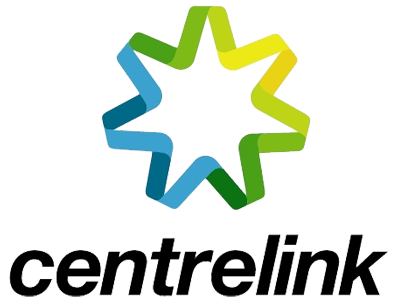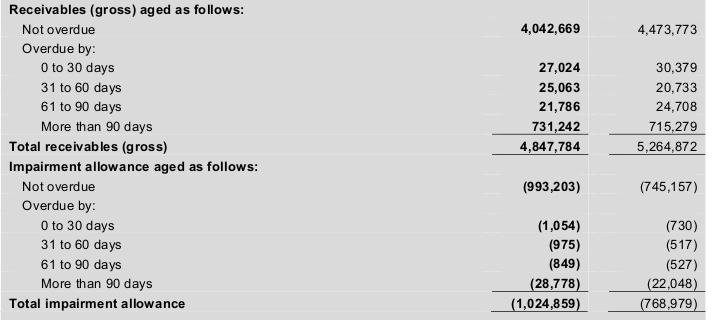The Australian Derpartment Department of Human Services continues to cover itself in glory* this week hundreds of people go public with their stories of incorrect debts being raised against them and the Kafka-esque bureaucracy that awaits anyone caught in its dragnet.
I’ve been digging into the financial justifications for the automation effort, and it’s a convoluted beast. The numbers being bandied about sound good in a headline, but figuring out the real numbers has been surprisingly difficult. Little wonder that the stories containing any of the figures, particularly the ones used by Ministers Alan Tudge and Christian Porter, are confusing at best.
Here’s my attempt to unravel what’s really going on here. I’ll provide links to primary sources, rather than media reports, where I can.
The Headline Number: $4 billion.
As best I can work out, this number comes from the balance sheet value of the amount of money paid to people that shouldn’t have been, for whatever reason.
The Department of Human Services operates the social welfare payment system (aka Centrelink) on behalf of the Department of Social Services (DSS). Both of them therefore report on the finances of social welfare payments, but they do it in slightly different ways. DSS has more of a governance and oversight role, while Centrelink is more operational.
We can therefore find financial information about Centrelink in DSS’ Annual Reports. It’s here that we can see, in the financial statements, a bunch of information about the money administered by DSS on behalf of the Government. This is different from the financials of DSS itself, which is more concerned with how DSS runs itself than how it looks after the Government’s money (even though it’s all ultimately Government money, i.e. our money).
For 2015-16, the important figure is in Part 4 (Financial Statements), specifically note 4.1A: Receivables.

Note 4.1A from the Department of Social Services’ Financial Statements from the Annual Report for FY 2015-16.
Here we can see that DSS expects that there is about $4bn of money paid as personal benefits payments that it should be able to recover, i.e. overpayments.
Importantly, there’s also an impairment allowance:

Receivables impairment allowances (Source: Department of Social Services’ Annual Report for FY 2015-16).
An impairment allowance how much money you don’t think you’ll be able to actually get back, for whatever reason. It’s writing off a bad debt, essentially.
Note the substantial change from FY 2014-15 (at the right) to FY 2015-16: $765 million dollar, or about 25% of the total balance. That means that DSS has re-evaluated how much of the debts (receivables) it thought it would be able to get back, and decided that it wouldn’t be able to recover quite a lot of it. 25% is a big change.
Why did this happen? Good question, and I haven’t figured that out yet.
There’s also this detail on Aged Receivables, which shows how overdue the debts are. As we can see, most of them, again around $4bn, are not at all overdue.
Finally we get to a consolidation of all this stuff to see how much money DSS reckons it will be able to actually get paid in the coming year, and how much will take longer than that:
Just under $1.2 billion this year, and another $2.64 billion ‘eventually’.
An important thing to note here: with accruals accounting (which is what is being used here, like most organisations) you never get your receivables to zero. Receivables are used to track the difference in timing between when a debt is incurred (you owe the money) and when you actually get the cash. Whenever anyone buys something on credit, this happens. The bigger the organisation, the larger this number will be, because the total volume of payments is larger.
What we’d need to look at (and I haven’t yet) is how large this running balance of receivables should be. Is it too high? Maybe. But by how much?
The bottom line here is that it will not get to zero unless DSS/Centrelink can manage to never overpay anyone for any reason, ever. That’s unrealistic, because it would require Centrelink’s systems to be perfect, and no system is perfect.
And that’s okay! As long as the running balance isn’t too large (and we need to know what that amount is and why) and stays relatively constant over time, then the money is flowing in and out of the system nice and smoothly. There will always be errors and mistakes, because we’re dealing with humans and human made systems, which always have flaws. It’s how you manage those flaws that matters.
Double-entry book-keeping and accruals accounting have been developed for just this reason. Provided you do it properly, and that’s where we should be focusing our attention. What does a properly run system look like, and how different is that from what we currently have.
Unless you can clearly articulate that, then you cannot fix the system. And this is the big, big problem with the Government’s current approach.
The Other Number: $1.7 Billion
Or is it $1.5 billion? That’s the other number being bandied about, and I’ll address that in another post because this one is already long enough.
Questions?







I’m an aged pensioner with very little or no assets (except my home), there was mention that will be getting a $30 PF rise, when is this supposed to happen? I thought it was going to come on or after 1st Jan.
Also we’re suppose to have rises on 20th of March & September, we never got any rise once Turnbill came in.
Give us fair dinkum pensioners a fair go. With food & power going up, how are we suppose to live?
The only effective solution to fiscal imbalance is a 12.5% reduction in all outlawys, which all can save back, in multi disciplines for sure, drugs, and poker machines academically now out of option, likewise alcohol.liberals likebpeople failing, their enemy science.
Good on ya Centrelink. That’s the spirit.
The Other Number: $1.7 Billion
Or is it $1.5 billion?
By my calculations from information contained in Centrelink’s annual report that would be the approximate total of taxpayers money paid to the employees of Centrelink each year. There is about 25,000 of them, none of whom are able to answer the phone.
25,000 people who would best be reminded, that were it not for the unemployed, they too would be.
The CEO’s salary is not disclosed, though in 2011 the 4 people below the CEO were earning $350,000 a year. Almost $1000 a day.
Recipients of Newstart Allowance, many of whom were previously employed tax payers, get approximately $35.70 per day.
2 levels down from $350K there were 69 people earning $160,000 per year.
Next comes the “Executive” levels of which there are two:
602 centrelink employees taking home $105,000p/a &
1,785 pocketing a cool $90,000(just itching to crack the big 100). Yes if you did the sums, these 1,785 public servants salaries alone total over $160 Million each year.
The largest group of employees on the same salary are those in the “APS 4” category, There are 14,166 people getting paid $58,581p/a which totals just under $830Million dollars per annum. Yes this is probably one of the people who hangs up on you as you finish repeating your 300th rendition of your hard luck story.
These next points are very important as they reveal a gross misrepresentation:
* Spending on welfare makes up approximately 36% of all government spending.
* “Assistance to the unemployed & the sick” is a sub-category which makes up 7.4 % of Social Security and Welfare spending (2015–16).It includes income support payments to unemployed people, such as Newstart Allowance and Youth Allowance (Other).
*** THIS MEANS THAT PAYMENTS TO UNEMPLOYED AND SICK AUSTRALIANS MAKES UP APPROXIMATELY ONLY 2% OF TOTAL GOVERNMENT SPENDING .
Ref: “A perspective on trends in Australian Government spending”